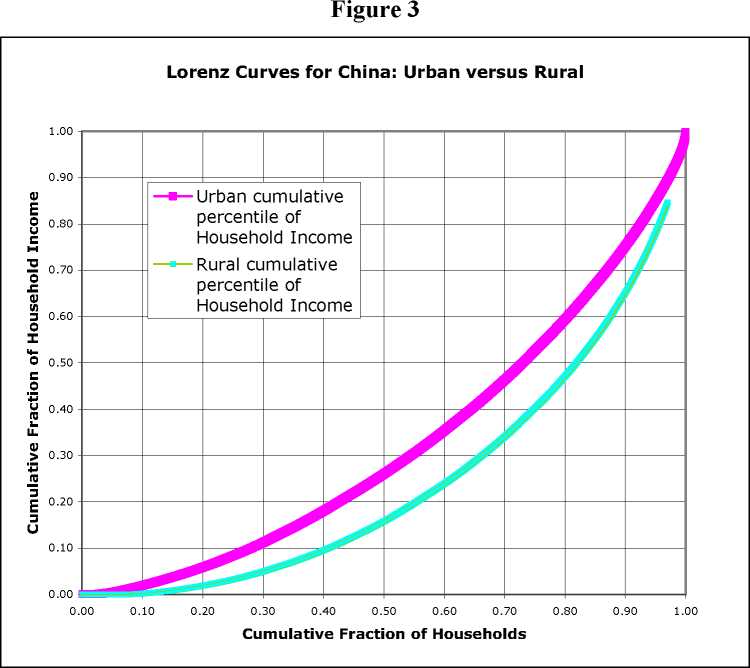Then, the Gini coefficient G can be expressed as: G = A/(A+B).10 The larger the
coefficient, the higher the income inequality. Our results appear to be consistent with the
results of Khan et al. (1999), which revealed an urban Gini coefficient of 0.332 for an
urban region consisting of eleven provinces. Our estimates are for the whole nation, but it
comprises only households headed by elderly.

4.2. Income and education
As described in the previous section rural households are far less educated than their urban
counterparts. In a changing Chinese economy where progressively more income is
generated by non-farm employment, illiterate or less educated households will be at a
disproportionate disadvantage.
“Over half of rural income is now earned outside of farming, so returns to off-farm
employment are rightly viewed as major determinants of income inequality.” (Benjamin
and Brandt, 1999, pp. 294). Therefore, one could expect more inequality in those villages
10 See Chakravarty (1999) and Cowell (1999) for measurement details.
10
More intriguing information
1. Wirtschaftslage und Reformprozesse in Estland, Lettland, und Litauen: Bericht 20012. Social Cohesion as a Real-life Phenomenon: Exploring the Validity of the Universalist and Particularist Perspectives
3. Iconic memory or icon?
4. Strategic Investment and Market Integration
5. Exchange Rate Uncertainty and Trade Growth - A Comparison of Linear and Nonlinear (Forecasting) Models
6. The name is absent
7. The name is absent
8. Problems of operationalizing the concept of a cost-of-living index
9. Revisiting The Bell Curve Debate Regarding the Effects of Cognitive Ability on Wages
10. EMU's Decentralized System of Fiscal Policy